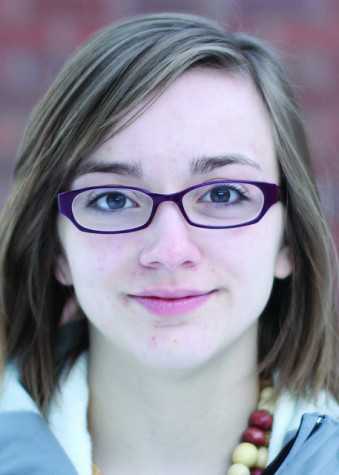Visiting filmmaker spotlights asexuality
March 1, 2013
March 3, 2013 Editor’s note: One of the couples featured in the film were not described accurately. A couple can not be heterosexual and asexual at the same time.
 Asexuality can describe many different lifestyles, but the culture has one common thread: Their sexual preference is not you.
Asexuality can describe many different lifestyles, but the culture has one common thread: Their sexual preference is not you.
In 2005, Angela Tucker was searching for a unique topic to create her first independent documentary. That May, Salon published an article describing the life story of asexual San Franciscan David Jay. Tucker was immediately inspired. She has since written, directed and produced “(A)sexual,” a comprehensive look at asexual lifestyles and culture across the country.
The most widely used description of the sexual preferences for asexuals states that they simply do not experience sexual attraction towards others.
“(A)sexual” begins by explaining that 1 percent of the population observed in an American university study of 18,000 respondents were not attracted to either males or females. This means that statistically there are 3 million asexual Americans. If EWU were a perfect representation of the study’s findings, there would be over 100 asexual EWU students.
Jay founded the Asexual Visibility and Education Network and the community-creating online forums within. Professionally, he is quite successful, but his personal life is strange to most. He has a specific friend for cuddling, another friend for deep conversations, etc.
Tucker told the group during the Q-and-A session after the showing that Jay is doing a lot better personally since filming the documentary and that he wants to be a father.
Also included in the film are an aromantic single woman, a grey-haired woman who recently joined the community and a romantic heterosexual hetero-romantic couple in which both partners are asexual.
“(A)sexual” briefly discussed the disproportionate number of autistic people, specifically Asperger’s syndrome, among the online community’s 26,000 members. Tucker hopes that the academic community will begin studying asexuality and its connection with autism in the near future.
Asexuality is not to be confused with belonging to the third gender. Third gender is a gender category in which members are neither male or female. Those of the third gender have created pronouns to refer to themselves with. Fira Ballew, an event attendee, chooses “jhe” in place of “he/her,” and “jhur” in place of “him/her.”
Ballew, an EWU interdisciplinary studies senior and aromantic asexual, said that jhe is happy to have the film available as a method of exposing jhur subculture to those who do not understand it. Jhe felt the film showed a lot of attacks on asexuality. “It felt like a punch in the gut to hear those,” said Ballew.
Zach Oxford, an EWU psychology and premedical chemistry junior, said that he came to the showing to better understand how personal relationships worked among asexuals. “It’s interesting to rethink present sexual relationships and wonder if there would be just as much love if there were no sex involved in the relationship,” said Oxford.
Clover, an EWU women’s studies junior, said that after seeing the film she felt that her understanding of asexuals not experiencing arousal is even more blurred. She said that it is important to talk to strangers personally before passing too much judgment on them.
Each student recommended the Pride Center in Showalter 207 as a safe haven for asxeuals. Clover also suggested reaching out to women’s studies majors. Tucker suggested joining the online community.
If a member of the EWU community would like to watch “(A)sexual” at home, there is a copy in the JFK library. It is available for streaming on Netflix, and for download on iTunes and Amazon.
Aascot’s interview with Angela Tucker on the issue of asexuality:
[soundcloud url=”http://api.soundcloud.com/tracks/80954484″ params=”” width=” 100%” height=”166″ iframe=”true” /]
Ms. Tucker’s insight concerning Independent film making:
[soundcloud url=”http://api.soundcloud.com/tracks/80955153″ params=”” width=” 100%” height=”166″ iframe=”true” /]









Elizabeth J. Anderson • Mar 3, 2013 at 12:32 pm
Hey, just wanted to leave a small correction. I’m half of the married couple profiled in the film, and it’s not correct to say we’re heterosexual and asexual at the same time, as those things are directly contradictory. We are only asexual. You can refer to us as hetero-romantic, or simply say we’re an asexual man and woman who are married. Otherwise this is a great piece. Thanks for writing it!